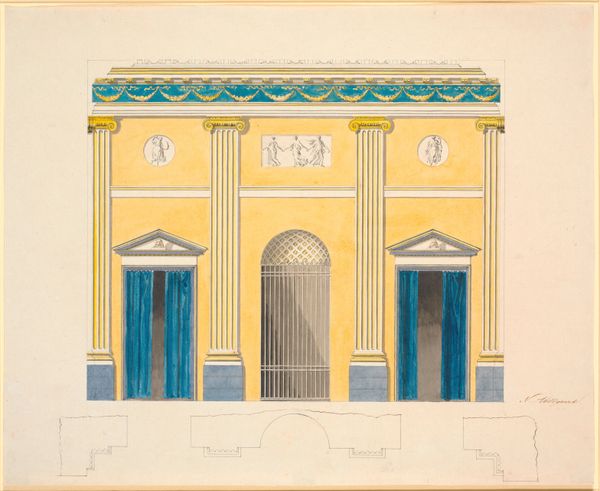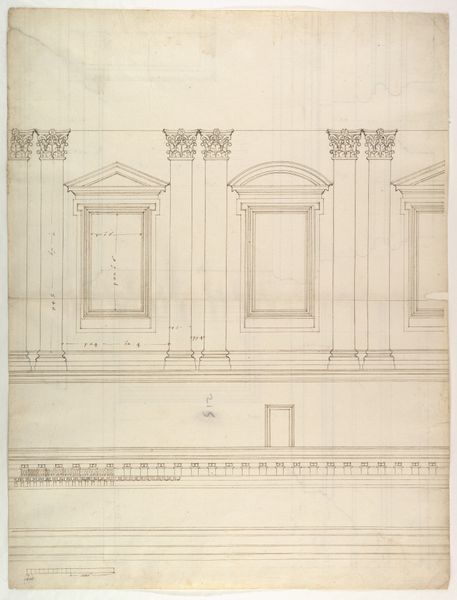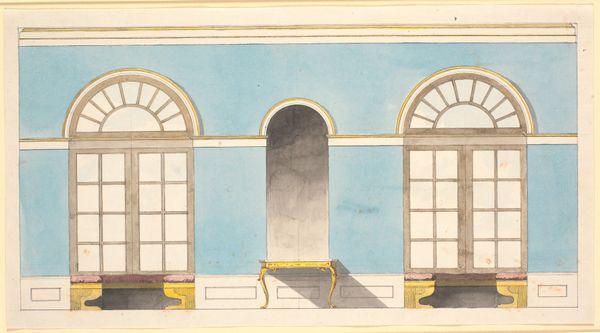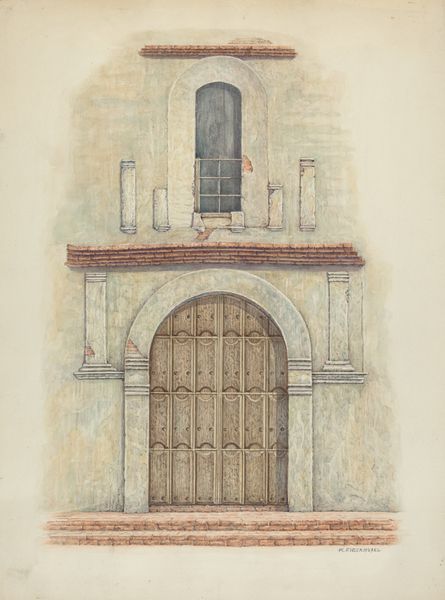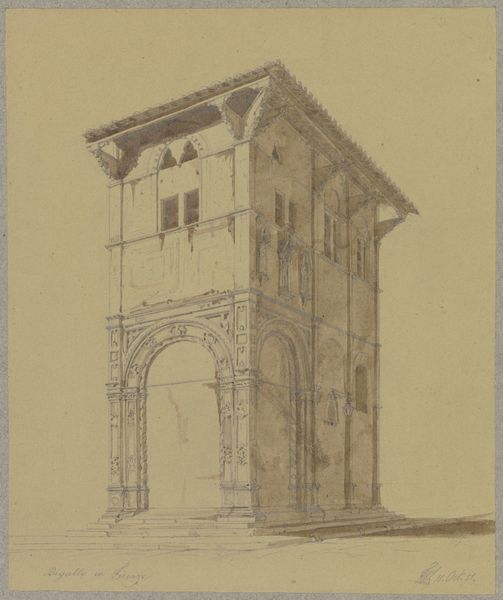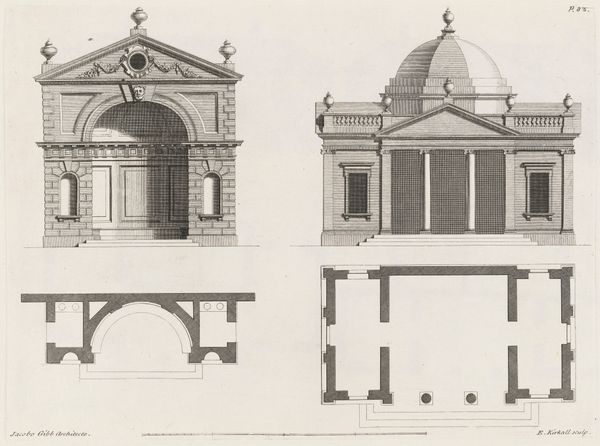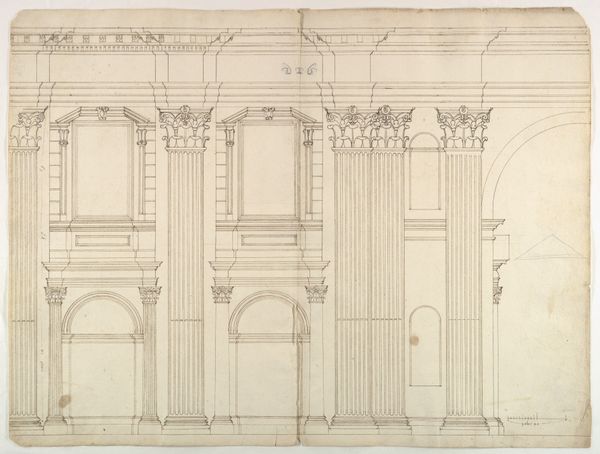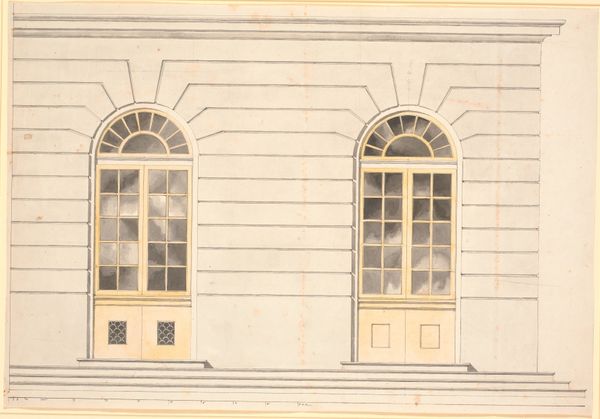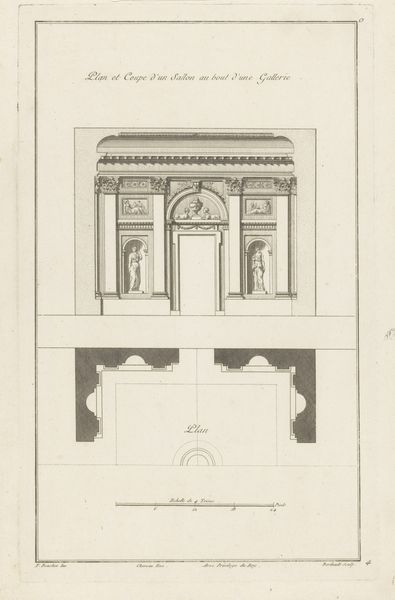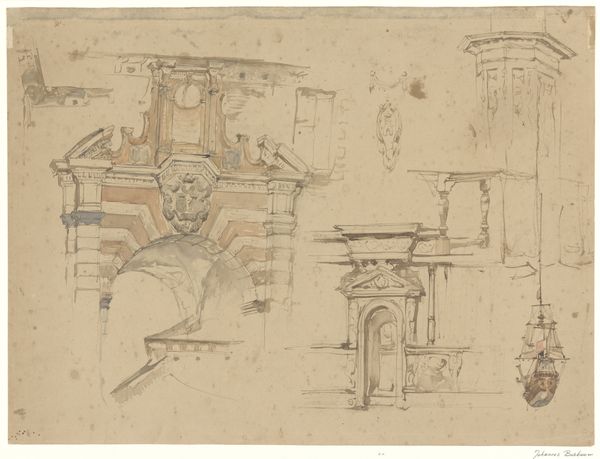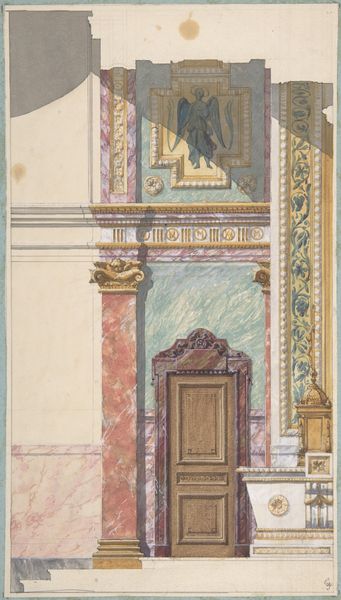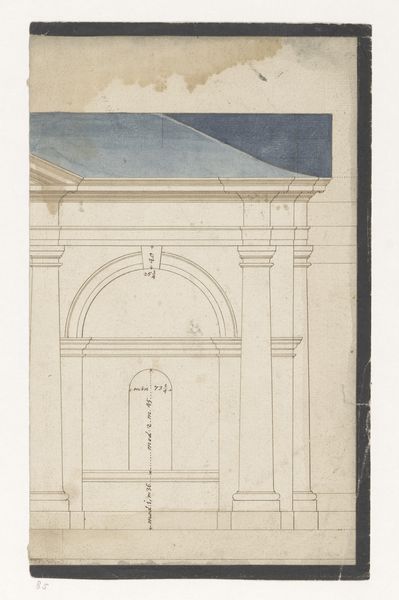
Udkast til dekoration af en ende- og langvæg i en sal med felter, der foroven afsluttes af buer 1743 - 1809
0:00
0:00
drawing, watercolor, architecture
#
drawing
#
neoclacissism
#
watercolor
#
watercolor
#
architecture
Dimensions: 464 mm (height) x 489 mm (width) (billedmaal)
Curator: Nicolai Abildgaard, a proponent of neoclassicism, created this watercolor drawing entitled "Udkast til dekoration af en ende- og langvæg i en sal med felter, der foroven afsluttes af buer," sometime between 1743 and 1809. It currently resides here at the SMK, Statens Museum for Kunst. Editor: You know, when I first saw this sketch, it felt like stepping into a Roman bathhouse designed by a melancholic architect. It’s all arches and faint figures; a whisper of grand design rather than a bold declaration. Curator: The neoclassical movement, flourishing as it did in the late 18th century, signaled a return to the perceived purity and ideals of classical antiquity, especially ancient Greece and Rome. Think rationality, order, symmetry – virtues sought after during the Enlightenment. Abildgaard, deeply entrenched in this movement, infuses the work with its key ideological and aesthetic principles. It really challenges us to consider how these artistic choices reflect the values of the era. Editor: Right! And yet, something about the washes of color feels like a personal yearning, a kind of nostalgia projected onto these archetypal forms. I feel the artist sketching the dreams of an empire rather than just drafting architecture. Curator: Precisely. In Abildgaard's Denmark, these allusions resonated powerfully. Neoclassicism was seen as a visual language of progress, linking the nation to a heritage of republicanism and intellectual sophistication, despite its conflicted status as a monarchy itself. Art like this aimed to instill civic virtue by alluding to the great cultures of the past. Editor: It’s almost haunting how lightly the figures are sketched, like memories fading into the stonework. Do you think Abildgaard consciously embraced that sense of transience, that nothing, not even the grandest empire, lasts forever? Or am I just projecting now? Curator: Projecting perhaps, but within reason. It is crucial to understand neoclassicism did not occur in a vacuum. There were already discussions concerning the rise and fall of empires. Abildgaard may have been keenly aware of such contemporary theories on historical change. Editor: This almost feels like a storyboard, framing how political and social narratives take space in a person's mind. All in all, it's way more than some simple architecture. Curator: I agree. In short, by observing its historical, political and social contexts, the art piece gives insight to how people perceived their current situation.
Comments
No comments
Be the first to comment and join the conversation on the ultimate creative platform.
